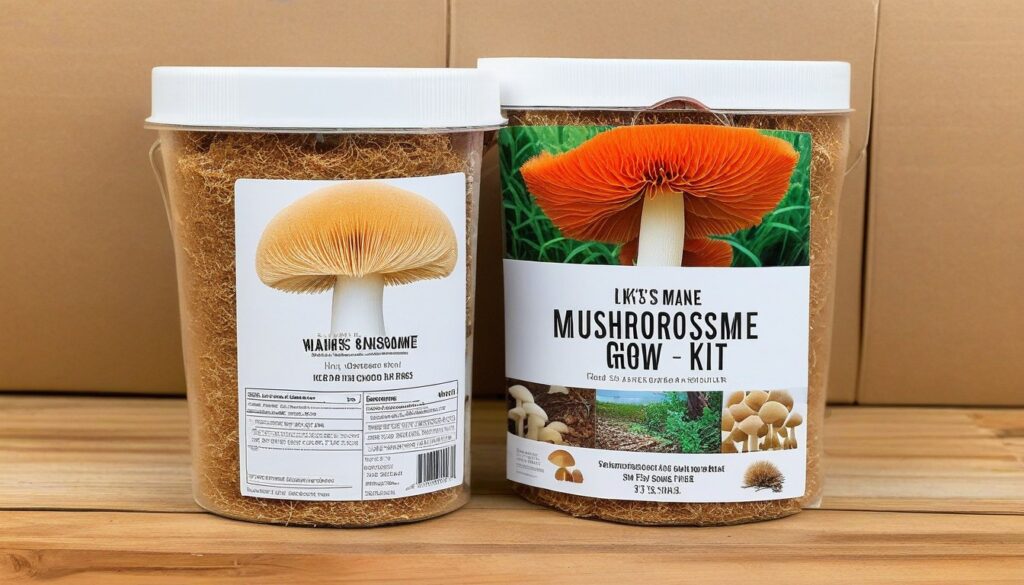Home gardening has become increasingly popular in recent years as people seek to connect with nature, reduce their carbon footprint, and enjoy the benefits of fresh produce. One of the most exciting developments in home gardening is the Lion’s Mane mushrooms grow kit, which allows you to grow your own gourmet mushrooms right at home!
The Lion’s Mane mushrooms grow kit contains everything you need to get started, including substrate, spores, and a grow bag. With a little bit of care and attention, you can watch your mushrooms grow from small pinheads to full-sized delicious gourmet mushrooms!
Key Takeaways:
- Home gardening is a popular way to connect with nature and enjoy fresh produce.
- The Lion’s Mane mushrooms grow kit makes it easy to grow your own gourmet mushrooms at home.
- With proper care, you can watch your mushrooms grow from small pinheads to full-sized delicious gourmet mushrooms.
- Growing Lion’s Mane mushrooms at home is a cost-effective and rewarding experience.
- The Lion’s Mane mushrooms grow kit allows you to enjoy the nutritional value and gourmet taste of fresh mushrooms, while reducing your carbon footprint.
What is a Lion’s Mane Mushrooms Grow Kit?
If you’re interested in growing your own mushrooms, a Lion’s Mane Mushrooms Grow Kit is a great place to start. These kits come with everything you need to grow your own delicious and nutritious Lion’s Mane mushrooms right at home!
Lion’s Mane mushrooms (Hericium erinaceus) are a unique and flavorful variety that are prized by chefs and food enthusiasts alike. They have a meaty texture and a slightly sweet, nutty taste. They’re also known for their many health benefits, including improving cognitive function and boosting the immune system.
A Lion’s Mane Mushrooms Grow Kit typically includes the following components:
- Uninoculated substrate (usually a combination of sawdust and grain)
- Lion’s Mane mushroom spawn
- A grow bag or container
- Instructions for use
The uninoculated substrate acts as a base for the mushroom spawn to grow. The Lion’s Mane mushroom spawn is essentially a source of mushroom mycelium that has been allowed to grow and propagate in a controlled environment. When introduced to the substrate, the mycelium will continue to grow and eventually produce fruiting bodies (i.e. the mushrooms themselves).
The grow bag or container is used to create a microclimate that’s optimal for mushroom growth. This usually involves maintaining a certain level of humidity and temperature, as well as providing adequate ventilation and light.
The Benefits of Growing Lion’s Mane Mushrooms at Home
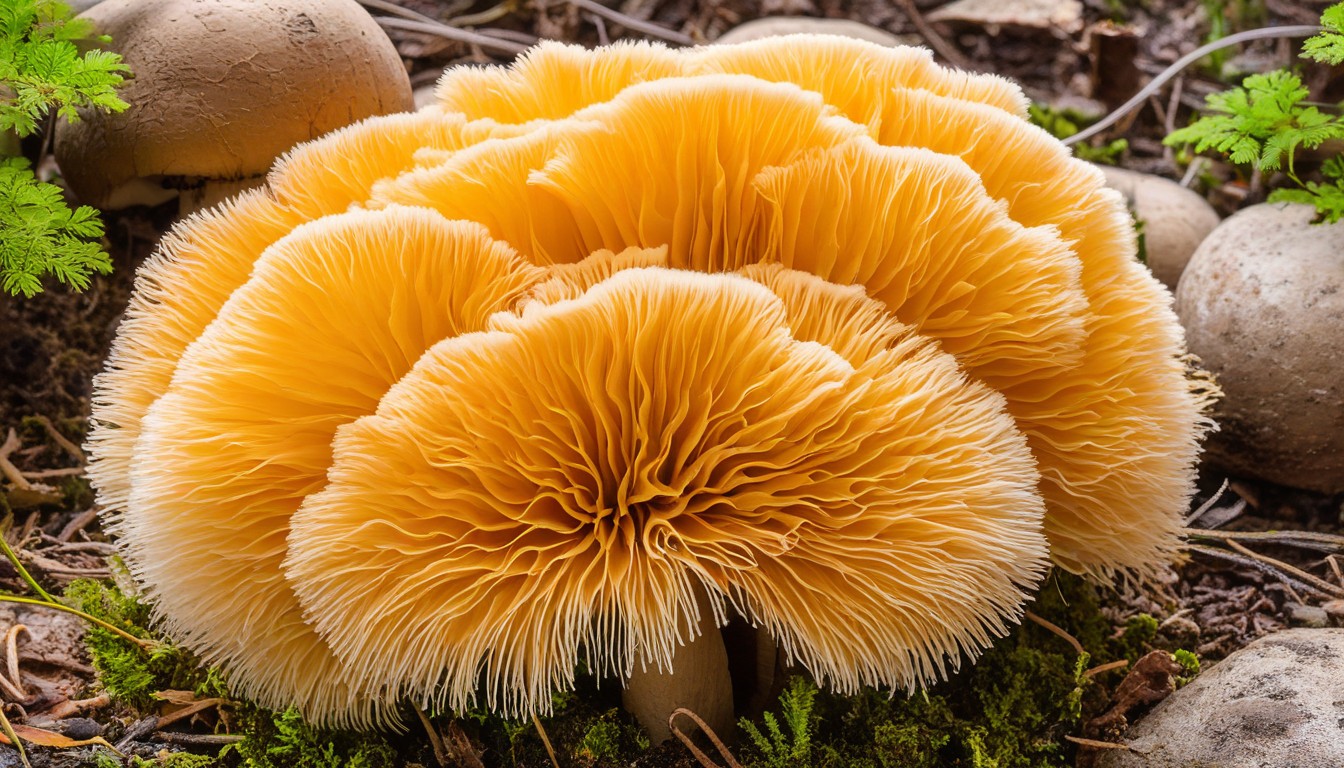
There are numerous benefits to growing Lion’s Mane mushrooms in your own home. Not only can you enjoy the delicious, gourmet taste of these mushrooms, but you can also reap the nutritional benefits and enjoy the cost-effectiveness of home gardening. Here are some of the key benefits of growing Lion’s Mane mushrooms at home:
Nutritional Value
Lion’s Mane mushrooms are packed with nutrients and are a great source of protein, fiber, and vitamins. They contain antioxidants that can help boost your immune system and have been shown to have neuroprotective properties, aiding in brain health.
Gourmet Taste
Lion’s Mane mushrooms are a delicacy known for their unique, meaty flavor and texture. They can be used in a variety of dishes, from stir-fries to soups, and are a favorite among chefs and foodies alike.
Cost-Effectiveness
Growing your own Lion’s Mane mushrooms can help you save money in the long run. With a grow kit, you can produce a significant yield for a fraction of the cost of purchasing them from a grocery store or farmer’s market.
Satisfaction and Pride
There is a sense of satisfaction and pride that comes with growing your own food. It’s a rewarding experience to see the fruits of your labor and know that you are able to provide for yourself and your family in a sustainable way.
Overall, growing Lion’s Mane mushrooms at home is a great way to enjoy the taste and benefits of this unique mushroom while also taking part in sustainable home gardening practices.
Getting Started with Your Lion’s Mane Mushrooms Grow Kit
If you’re new to growing mushrooms, don’t worry! This section will guide you through the process of getting started with your Lion’s Mane mushrooms grow kit.
The first step is to sanitize your workspace and gather all the components of your kit. Make sure to wash your hands and clean the surface where you’ll be working to prevent contamination.
Next, prepare the growing medium. Your kit should have come with a bag of sterilized sawdust and a bag of mushroom spawn. Mix the two bags together in the plastic tray provided, making sure to break up any clumps of sawdust. Spread the mixture evenly in the tray and cover it with the plastic bag to maintain humidity.
Using a sterilized fork or spoon, make holes in the growing medium about an inch apart. This is where you’ll insert the mushroom spawn. Take care not to touch the spawn, as it’s a delicate living organism.
Once you’ve inoculated the growing medium, cover it with the plastic bag and place it in a warm, dark location. The ideal temperature for Lion’s Mane mushrooms is around 65-75°F. Check the humidity level frequently and mist the inside of the plastic bag with water if it becomes too dry.
After a few weeks, you should start to see white, web-like tendrils growing from the holes in the growing medium. This is called mycelium, and it means that your mushrooms are taking root.
When the mycelium has fully colonized the tray, remove the plastic bag and move the tray to a location with indirect light. Gradually increase the amount of light, as direct light can damage the delicate mushroom caps.
Continue to mist the tray with water as needed, and in a few weeks, you should see small, white mushrooms starting to grow. Congratulations, you’ve successfully grown your own Lion’s Mane mushrooms!
Caring for Your Lion’s Mane Mushrooms
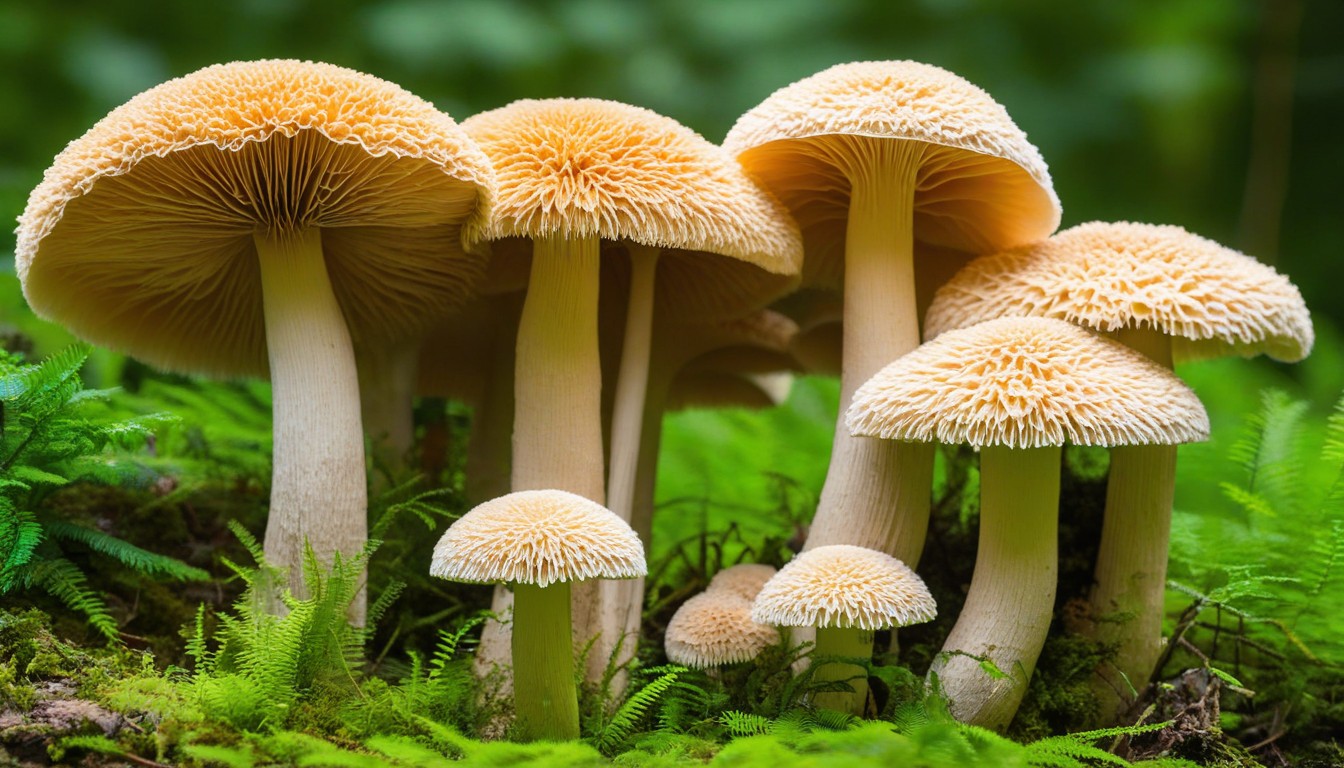
Caring for your Lion’s Mane mushrooms is crucial for a successful harvest. These delicate gourmet mushrooms require specific growing conditions and maintenance. Here are some tips for ensuring your mushrooms thrive:
Humidity
Lion’s Mane mushrooms require high humidity levels, ideally between 85-95%. To maintain proper humidity, mist the growing medium daily with a spray bottle filled with water. You can also cover the container with a plastic lid or wrap to retain moisture.
Temperature
The ideal temperature range for Lion’s Mane mushrooms is between 60-75°F (15-24°C). Keep the grow kit in a cool, dark place away from direct sunlight and heat sources like radiators or appliances.
Lighting
Lion’s Mane mushrooms do not require direct sunlight, but they do need some light exposure. Indirect, ambient light is sufficient, so place the grow kit in a location where it can receive some natural light or use a grow light lamp for 12 hours a day.
Watering
It’s essential to keep the growing medium damp but not soaking wet. Overwatering can lead to contamination and mold growth. Check the moisture level daily and adjust watering as needed.
Ventilation
Adequate air exchange is crucial for healthy mushroom growth. Open the container lid for a few minutes each day to allow fresh air to circulate. Be careful not to expose the mushrooms to strong drafts or dry air.
Pro tip: If you notice any yellowing or browning on the mushroom surface, it means the humidity level is too low. Increase misting frequency or cover the container with a plastic wrap to increase humidity.
Harvesting and Using Your Lion’s Mane Mushrooms
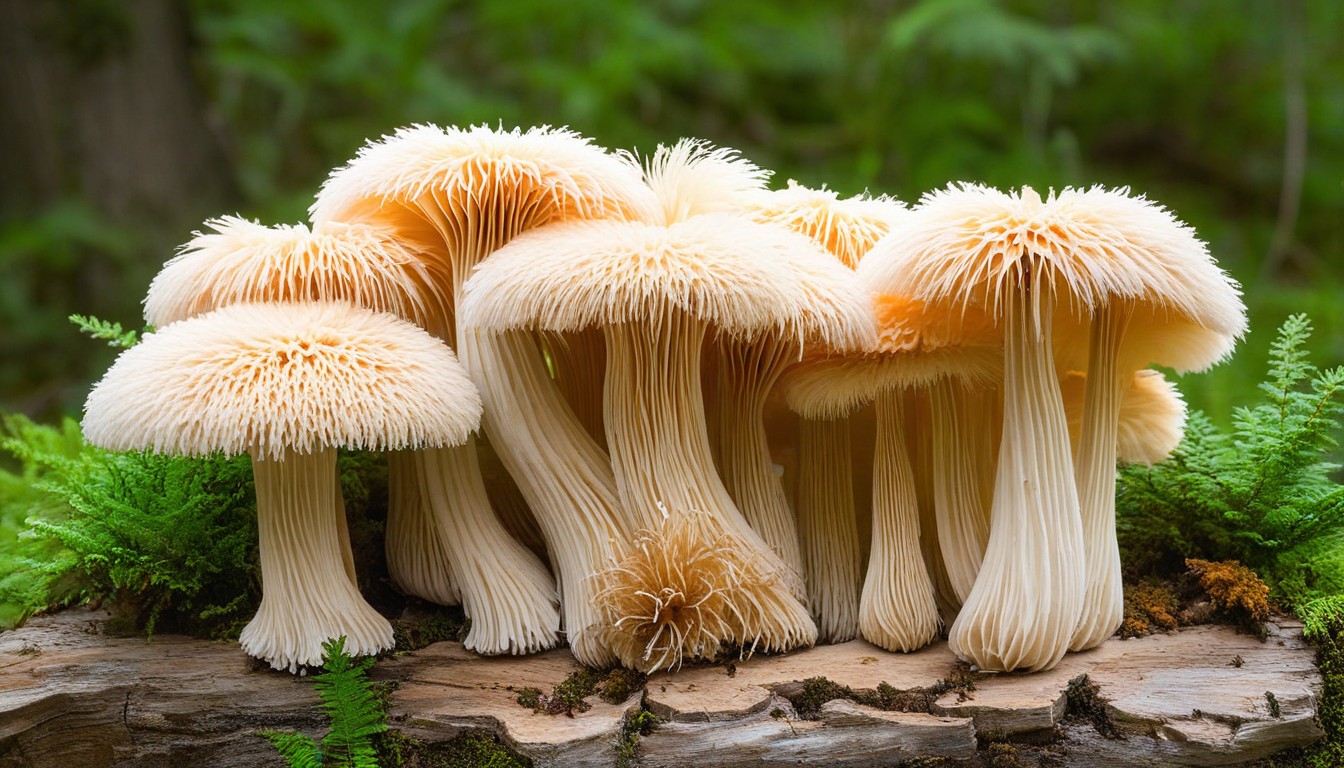
Congratulations, you’ve successfully grown your Lion’s Mane mushrooms! Now, it’s time to harvest and enjoy them. Here are some tips on how to harvest and use your delicious mushrooms:
- Harvesting: It’s best to harvest your mushrooms when they reach their peak size, which is typically between 4-6 inches in diameter. To harvest, gently twist the mushroom stem until it breaks away from the substrate. Avoid pulling or tugging the mushroom, as this can damage the substrate and impact future growth.
- Cleaning: Lion’s Mane mushrooms have a unique appearance with their white, shaggy tendrils. However, these tendrils can be a bit tricky to clean. To clean your mushrooms, use a soft-bristled brush or damp cloth to gently remove any debris or dirt. Avoid soaking the mushrooms in water, as this can impact their texture and flavor.
- Cooking: Lion’s Mane mushrooms have a sweet, nutty flavor and a meaty texture, making them a versatile ingredient in the kitchen. They can be sautéed, grilled, roasted, or added to soups and stews. Here’s a simple recipe to get you started:
Lion’s Mane Mushroom Sauté:
- Heat olive oil in a pan over medium heat.
- Add sliced Lion’s Mane mushrooms and minced garlic to the pan.
- Sauté for 5-7 minutes, until the mushrooms are browned and tender.
- Season with salt, pepper, and fresh herbs like thyme or rosemary.
Enjoy your delicious Lion’s Mane mushrooms, and don’t forget to save some for next time!
Troubleshooting Common Issues with Lion’s Mane Mushroom Cultivation
While growing Lion’s Mane mushrooms can be a rewarding experience, it’s common to encounter some challenges along the way. Here are some common issues that you might encounter and how to troubleshoot them:
Poor Growth or No Growth
If you notice that your mushrooms are not growing or have stopped growing, there are several possible causes. One common issue is that the temperature is too low, which can slow down growth. Make sure that the temperature is within the ideal range of 60-75°F. Another possible cause is that the substrate is too dry. Be sure to monitor the humidity levels and mist the substrate if necessary.
Mold or Contamination
Mold is a common issue when growing mushrooms and can be caused by a variety of factors, including poor ventilation, high humidity, or contamination from spores. To minimize the risk of mold, be sure to maintain proper ventilation and keep the growing area clean. If you notice mold, remove any contaminated mushrooms and substrate, and sanitize the growing area before starting again.
Poor Flushes
If you notice that your mushrooms are not producing many flushes or are producing small mushrooms, there are a few things you can try. First, be sure to properly age the substrate before beginning the growing process. Additionally, consider adjusting the humidity levels and increasing air circulation to promote better fruiting.
Pro Tip: If you’re struggling to troubleshoot issues with your Lion’s Mane mushrooms, consider reaching out to online forums or consulting with a mushroom growing expert for additional support.
Expanding Your Mushroom Growing Skills
If you’ve enjoyed growing Lion’s Mane mushrooms using a grow kit, you may be interested in expanding your mushroom growing skills. There are many different mushroom varieties you can grow at home, each with their unique flavor, texture, and growing requirements.
One popular mushroom variety you might consider is oyster mushrooms. Oyster mushrooms are easy to grow and have a mild, slightly sweet flavor. They are also highly nutritious, containing protein, fiber, vitamins, and minerals.
Another type of mushroom to try is shiitake mushrooms. Shiitake mushrooms have a rich, savory flavor and are often used in Asian cuisine. They require a bit more attention than Lion’s Mane or oyster mushrooms, but the effort is well worth it.
If you’re feeling adventurous, you might want to try growing more exotic mushroom varieties like enoki mushrooms, maitake mushrooms, or chanterelle mushrooms.
Resources for Further Learning and Experimentation
If you’re interested in expanding your mushroom growing skills, there are many resources available to help you. Here are a few to consider:
- The Mushroom Cultivator: A Practical Guide to Growing Mushrooms at Home by Paul Stamets and J.S. Chilton
- Growing Gourmet and Medicinal Mushrooms by Paul Stamets
- Online mushroom growing communities and forums, such as the Shroomery and Mushroom Growers of North America
- Local mushroom growing workshops and classes
By expanding your mushroom growing skills, you can enjoy a wider variety of delicious and nutritious mushrooms while also honing your gardening skills. So why not give it a try?
The Environmental Benefits of Home Mushroom Cultivation
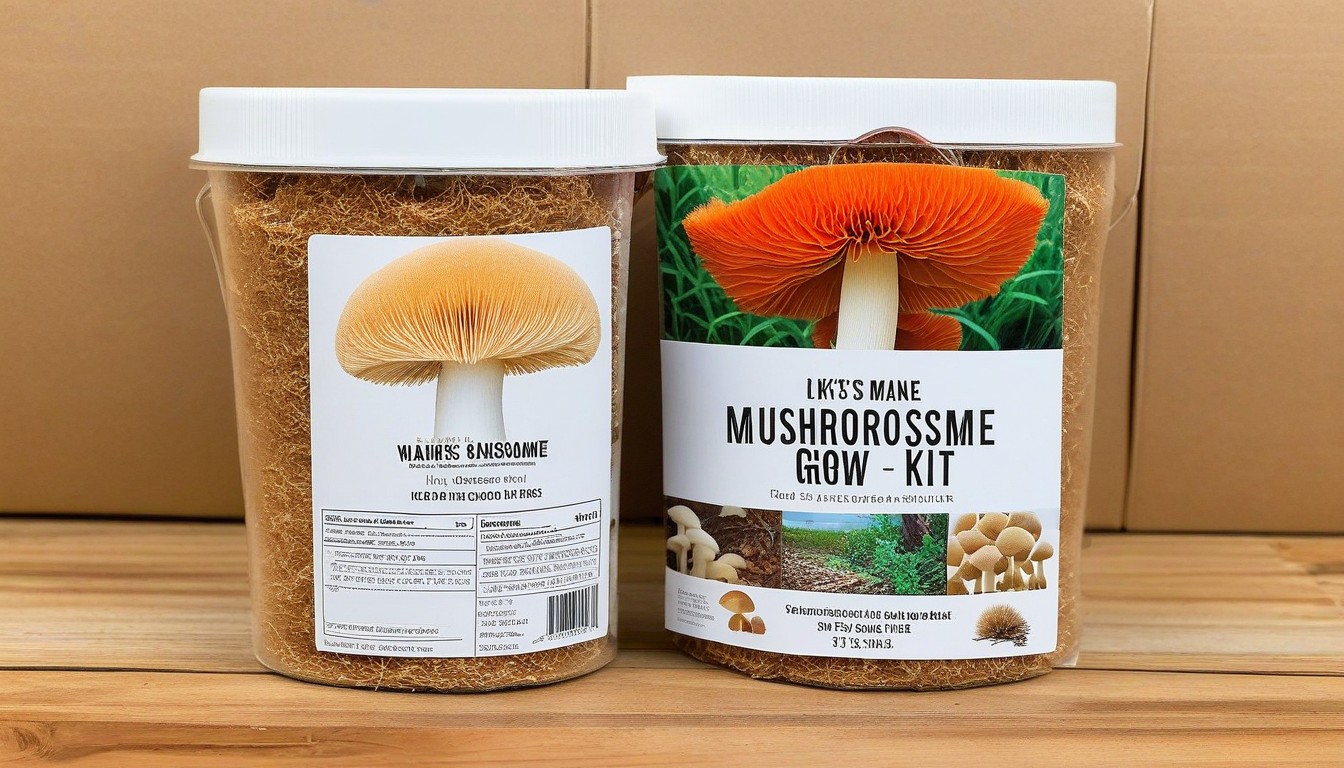
Home mushroom cultivation not only provides an opportunity to grow delicious and healthy food but also has several environmental benefits. Here are some of the key benefits:
Reducing Food Waste
According to the USDA, food waste is estimated to be between 30-40% of the food supply in the US. By growing your own mushrooms at home, you can reduce food waste by only harvesting what you need and using the rest of the substrate for composting. This helps divert food waste from landfills, thereby reducing greenhouse gas emissions and preserving natural resources.
Reducing Carbon Footprint
The transportation of food from farms to grocery stores and then to our homes contributes to carbon emissions. Growing mushrooms at home eliminates the need for transportation as you can simply harvest them from your mushroom kit. Additionally, mushroom cultivation requires less water and energy compared to traditional crops, making it a more sustainable food production method.
Promoting Sustainable Living Practices
Home mushroom cultivation is not just limited to edible mushrooms but also includes medicinal and functional mushrooms that have several health benefits. By growing your own mushrooms, you have control over the quality and organic status of your food, which promotes sustainable living practices. Plus, you can reduce the demand for commercially grown mushrooms that may have been produced using harmful pesticides and fertilizers.
Overall, home mushroom cultivation is a sustainable and environmentally friendly food production method that can contribute to a better world. Try growing your own mushrooms today and enjoy the many benefits it has to offer!
Conclusion
Congratulations on learning about the exciting world of home gardening with a Lion’s Mane Mushrooms Grow Kit! We hope this article has inspired you to start your own mushroom growing journey and experience the benefits of growing your own food at home.
Remember that with a little effort and patience, you can enjoy the delicious taste and nutritional value of Lion’s Mane mushrooms right from your own home. Follow the steps outlined in this article, and don’t be afraid to experiment and expand your mushroom growing skills beyond Lion’s Mane.
By cultivating your own mushrooms, you’re not only enjoying the rewards of home gardening, but also contributing to sustainable living practices and reducing your carbon footprint. So go ahead, give it a try and happy growing!
FAQ
What is a Lion’s Mane Mushrooms Grow Kit?
A Lion’s Mane mushrooms grow kit is a complete package that includes everything you need to grow Lion’s Mane mushrooms at home. It usually consists of a substrate or growing medium infused with Lion’s Mane mushroom spores, a growing container, and instructions for cultivation.
What are the benefits of growing Lion’s Mane mushrooms at home?
There are several benefits of growing Lion’s Mane mushrooms at home. First, they have excellent nutritional value, providing various vitamins and minerals. They also have a gourmet taste and can be used in various dishes. Additionally, growing your own mushrooms is cost-effective and allows you to experience the satisfaction and pride of growing your own food.
How do I get started with my Lion’s Mane Mushrooms Grow Kit?
To get started, you’ll need to prepare the growing medium by following the instructions provided with the kit. Then, you’ll inoculate the substrate with the Lion’s Mane mushroom spores. Finally, you’ll need to maintain the ideal growing conditions, including temperature, humidity, and lighting, as specified in the instructions.
How do I care for my Lion’s Mane mushrooms?
Proper care for Lion’s Mane mushrooms involves maintaining the ideal growing conditions. This includes keeping the temperature within the recommended range, providing adequate humidity, and ensuring proper lighting. You’ll also need to water the mushrooms regularly and ensure proper ventilation to avoid any potential challenges that may arise during cultivation.
How do I harvest and use my Lion’s Mane mushrooms?
To harvest your Lion’s Mane mushrooms, gently twist and pull them from the substrate when they reach maturity. To maximize their flavor and texture, it’s best to use them immediately after harvest. Lion’s Mane mushrooms can be used in a variety of culinary dishes, including stir-fries, soups, sautés, and more.
What should I do if I encounter problems during cultivation?
If you encounter problems during cultivation, such as mold, contamination, or slow growth, there are several troubleshooting tips you can try. These include adjusting the growing conditions, maintaining proper cleanliness and hygiene, and ensuring proper air circulation. If the problem persists, it may be helpful to seek advice from experienced mushroom cultivators or consult additional resources for guidance.
Can I expand my mushroom growing skills beyond Lion’s Mane mushrooms?
Absolutely! Once you have gained experience with growing Lion’s Mane mushrooms, you can explore and expand your mushroom growing skills to other popular varieties. There are many resources available, such as books, online tutorials, and communities of mushroom cultivators, that can help you learn and experiment with different mushroom species.
What are the environmental benefits of home mushroom cultivation?
Home mushroom cultivation offers several environmental benefits. By growing your own mushrooms, you can help reduce food waste since you can harvest and use them when needed. Additionally, mushroom cultivation has a lower carbon footprint compared to commercial production methods, making it a sustainable option for those passionate about eco-friendly practices.

